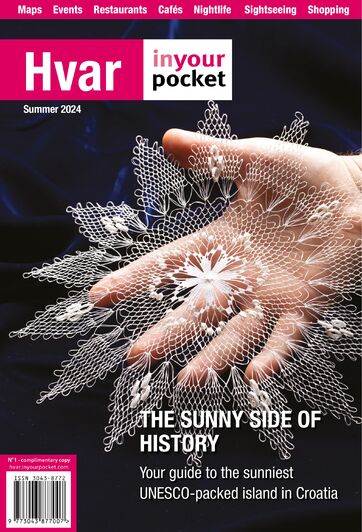Grgur Bučić (1829-1911)
Few people contributed as much to Hvar's development as postmaster Grgur Bučić, a man of many talents and enthusiasms who pioneered the study of archeology, natural history and oceanography on the island. Most importantly he headed the town's meteorological station, which was based at the former fortress of Veneranda (now site of a summer concert stage and open-air cinema) and made the first scientific study of Hvar's famously sunny climate. The information recorded here provided hard statistical evidence that Hvar was one of the driest, sunniest spots in the whole Mediterranean, and ideally suited to the kind of health tourism then popular among Central Europe's upper classes. The formation of the Hvar Hygienic Society, a kind of embryonic tourist association, in 1868, was a direct outcome of Bučić's findings - Bučić himself was a leading member. Bučić also experimented with the cultivation of sea sponges in local waters, with the hope of nurturing a sponge industry, but faced opposition from local fishermen who feared that the sponges interfered with their nets. The Hvar Heritage Museum contains a room devoted to Bučić, displaying scientific instruments and some of his published works.Petar Hektorović (1487-1572)
Sixteenth-century Dalmatia was at the centre of the Croatian Renaissance, with a host of poets and playwrights demonstrating that the Croatian language was a sufficiently versatile instrument to serve a variety of literary uses. Prime among these was Petar Hektorović, a Hvar noble whose family owned property in both Stari Grad and Hvar Town.His highly original 1568 work Ribanje i ribarsko prigovaranje ("Fishing and Fishermen's Chat"), despite its rather unpromising title, was a landmark in Croatian literature, an account of a fishing trip written in verse that mixed elements of travelogue with observations of local wit and wisdom. It treated the local fisherfolk as characters deserving of lyrical literary treatment, thereby introducing a down-to-earth humanist element into the writing of the time.
Hektorović was also famous for building the Tvrdalj, a fortified manor house in Stari Grad that has survived to become one of the island's main tourist attractions. It's a typical Renaissance house, with garden, fish-pond and dovecote symbolizing the harmony of earth, water and air. It also had a social function, providing walled sanctuary for Stari Grad's common folk in the event of raids by Ottomans or pirates.
Hanibal Lucić (1485-1553)
Hektorović's contemporary Hanibal Lucić was another of the island's nobles, playing a prominent role in the lives of Stari Grad and Hvar Town. He wrote a play, Robinja ("The Slave Girl"), rich in Croatian folklore, and a sizeable body of poetry - much of which he destroyed because he wasn't satisfied with the results. Lucić is buried in the family grave just below the altar in the church of Hvar's Franciscan Monastery. His former weekend house, in a walled garden just beyond Hvar's bus station, nowadays belongs to the Hvar Heritage Museum (Muzej hvarske baštine) and contains a memorial room recalling Lucić's life and times.Vinko Pribojević (mid-1400s to mid-1500s).
Hvar-born Dominican monk Vinko Pribojević was one of the first learned locals to study the history of the Croats and weave it into a general picture of the Slav nations of Central and Eastern Europe. His 1532 work The Origin and Glory of the Slavs, based on an address delivered in Hvar some years earlier, placed the Dalmatian Croats within the context of a great Slav family. Pribojević erroneously considered the ancient Illyrians to be precursors of the Croats, popularizing the use of the word Illyria to describe the Eastern Adriatic seaboard.Ivan Vučetić (1858-1925).
The father of crime-scene investigation as we know it today, Hvar-born Ivan Vučetić is widely recognized as the initiator of dactyloscopy, or fingerprint identification. Born into a local family in 1858, Vučetić left for Argentina at the age of 26 and went on to forge a career in the La Plata police department. After reading about the uniqueness of human fingerprints, he realized that it could be applied to criminal investigations. Although Vučetić initially had to defend his ideas against those who thought that fingerprinting could never be an exact science, his findings were soon universally accepted by investigators around the globe. There's a bust of Vučetić in the small park next to the Mandrać boat harbour (inscribed 'Ivan Vučetić "Foranin"', a local dialect world meaning "man from Hvar") and a mosaic portraying a huge fingerprint on the ground right next to it. Leaving Hvar on the road to Milna and Stari Grad, there's a mural of Vučetić adorning a kerb-side wall Ivan Vučetić Museum of Mystery.


